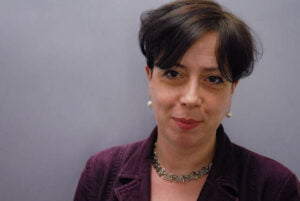
Alex Klaushofer embraces the new opportunities for publishing mid-length work
The digital publishing revolution has brought both opportunities and threats to those who write in specific non-fiction genres, whether in traditional book form or for other print publications such as newspapers and magazines. British author and journalist Alex Klaushofer explains and examines the special opportunities and challenges of writing and self-publishing midform books, drawing on her own experience for a case study.
Sometimes it’s hard, to misquote Tammy Wynette, to be a publisher. There’s so much talk about the opportunities opened up by the digital revolution, but most of it is set against a background of change and challenge in which the struggle for readers and sales is greater than ever. But for me, there’s one digital-age development that stands out as an unqualified opportunity: the rise of the midform book.
What is Mid-form Writing?
Shorter than a book but longer than an article (generally 5000-30000 words), the digital short is becoming an increasingly popular format for writing historically ruled out by the economics of publishing full-length print books. Now pieces whose natural length meant they saw the light of day in collections of short stories or essays, if at all, have found their form.
It’s not hard to see why the digital short suits the needs of the times:
- For writers and publishers, it requires an investment of time and resources proportionate to the likely rewards of certain projects
- For indie authors, it accords with the marketing practice of selling multiple, linked products and cross-fertilising sales with giveaways
- For readers, it offers the satisfaction of finishing something on their tablets within a train journey or two
Special Benefits for Academic Publishing
In non-fiction in particular, the emergence of the digital short represents a liberating trend.
Figures on the decline of authors’ incomes show that, on average, writers of non-fiction earn half of the revenues from fiction, with travel and academic writing paying the lowest of all.
It’s not surprising, then, that the digital short is finding favour in academic publishing, providing scholars and presses with a handy format to get research out into the world quickly, and in a form more accessible to readers than a full-length monograph.
Advantages for Travel Writers in Challenging Times
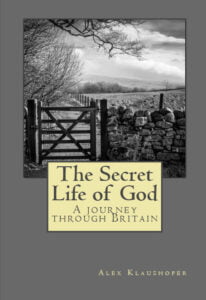
Alex Klaushofer has adapted her latest book to take advantage of the mid-form opportunities – see four images below
There are signs that the digital short may provide part of an answer to the challenges in my own genres of travel writing and reportage:
- traditional travel writing is notoriously consumptive of time and money
- the research and trips involved means that a full-length book usually takes years to produce, and that’s without counting the publication and marketing process
- twenty-first century readers have many ways of learning about far-flung places other than investing hours reading lengthy armchair accounts of journeys by others
- the crisis in journalism, meanwhile, has cut pages and budgets for foreign affairs, with the result that there are few outlets in which to publish in-depth writing about the wider world
In this context, an economical digital read – short in publishing terms, longform if viewed from journalism – is a less daunting proposition.
The ‘reporting’ category of Kindle Singles is host to pieces of reportage that would never find their way into a news paper or website. An early success story comes from Libya with The Shores of Tripoli while A Syrian Wedding reveals how life goes on amid one of the world’s most intractable conflicts.
Beyond Amazon, a range of sites are bringing the articles that magazines now rarely print to a readership hungry for longer reads. My own first foray into midform led me to hope that the ‘travella’ – my name for a midform travelogue – may help to save the genre from extinction.
How to Market Midform Books
To be sure, the digital short throws up marketing challenges of its own. As Joseph Esposito points out in this excellent piece, the original short is particularly hard to publicise because, as a standalone, it has to make its way amid a sea of other digital-only publications with any connection to what’s already out there. Hence the appeal of ‘chunking’ – the breaking up of a full-length book into publications on specific subjects which can then be marketed to niche readerships.
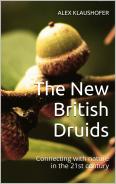
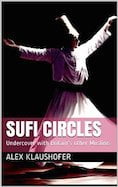
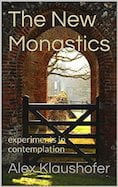
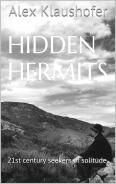
Chunking was a natural next step for me when I released sections of The Secret Life of God on monasticism, Sufism and Druidry for readers interested in particular aspects of British religiosity (see images left). The approach effectively constitutes a sibling trend of post-publication serialisation which, as award-winning author Victoria Noe describes, helped her find readers for her niche writing on grieving for friends.
But, the benefits of niche marketing aside, there is no silver bullet for publishers of midform.
As Esposito points out: ‘What’s important to realize about shorts is that they are native to digital media … Good creative work takes time. The internet may be impatient, but we must allow creative people the time to develop a new publishing ecosystem.’
#Selfpub: how to take advantage of new opportunities for midform writing - by @alexklaushofer Share on XOVER TO YOU Do you have an interesting case study of midform self-publishing to share? Can you offer top tips for marketing mid-form books? Join the conversation!
FROM THE ALLi ARCHIVE:
ANOTHER POST ABOUT BOOKS OF DIFFERENT LENGTHS, THIS TIME WITH A FOCUS ON FICTION




Many books have only one core idea, so short publishing is worthy for many readers of non fiction books.
[…] piece was originally published in the Self Publishing Advice Center of the Alliance of Independent […]
A couple of points I would’ve been interested in seeing expanded on –
1. How can academic titles be effectively promoted? I would expect serious scholars to be slightly leery of works without the imprimatur of a respected journal, one of the traditional academic publishers, or any other form of peer review.
2. How about pricing? I think Amazon will only give you 70% royalties if you’re above the $2.99 pricepoint. I wonder if there’s a certain length below which readers feel cheated by a price of $2.99 or above… and the next notch down (30% of royalties) is a big slug to take. Especially if your work is selling for less than that in the first place.
All of my ebooks are this length, esp for older children, and they have been selling. They are fiction though, I haven’t tried that length in non-fiction yet.